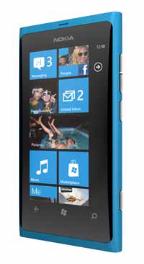Basic HTML Version




www.binfo.co.uk
magazine
06
agenda
Facebook is the most popular social media platform amongst small
to medium-sized enterprises (SMEs), with just over a quarter (26%)
using the popular social networking website, followed by LinkedIn
(25%), Twitter (21%) and YouTube (10%).
The latest YouGov SME Omnibus survey reveals that more than half
of SMEs (56%) never use social media to promote their business, but of
those that do, 28% believe LinkedIn is the most effective site, just ahead of
Twitter (25%) and Facebook (22%).
The most popular uses of social media are to promote products and
services (68%) or a business’s brand (57%). Only one fifth (21%) use social
media to advertise discounts or special offers.
Online shopping risk
IT professional association ISACA’s fourth
Shopping on the Job Survey highlights another
security risk linked to IT consumerisation – online
shopping. A poll of its membership, revealed
that UK respondents plan to spend an average
of 29 hours shopping online this holiday season,
23 of which will be spent on a work device or
a personal device also used for work: 9 of these
hours will be during work hours.
www.isaca.org/online-shopping-risk
Abandoned trolleys
Concerns about online security, over-long forms
and enforced sign-up are the three things
most likely to make consumers abandon online
purchases, according to a survey of 1,000
consumers by Postcode Anywhere, the market
leader for online address auto-fill. The Top Five
reasons for cart abandonment are: security
concerns (50%); forms that take too long to
fill out (44%); being made to open an account
before checkout (38%); having to leave the
payment process to work out the final price
(31%); and deciding they don’t like the product
after all (31%).
www.postcodeanywhere.co.uk
Social media adds to
network overload
The extent to which staff use of
recreational websites such as Facebook
and YouTube overloads corporate
networks has been uncovered by IT
optimisation consultancy Intergence
Systems. Its analysis of client audits from
the last four years shows that in 90%
of cases, web traffic is one of the top
three contributors to network traffic,
accounting for 10%-30% of traffic
overload in any 24-hour period, and more
than 75% during working hours.
The only two applications that
consistently contribute more traffic to
company networks are backups (which
typically take place out-of-hours) and
Server Message Blocks/Common Internet
File Systems (SMBs/CIFS), which provide
shared access to files, printers, serial ports
and other miscellaneous communications
between nodes on a network.
Peter Job, CEO of Intergence, said:
“During a working day, unmanaged web-
browsing can introduce enough traffic into a
network to have a major impact on business
critical applications, especially those
sensitive to network congestion. Companies
might be paying for bigger pipes than are
necessary to increase their bandwidth on
the mistaken assumption that all the traffic
they are carrying is essential.”
Intergence can help businesses assess
the extent of the problem by installing
monitoring software that shows exactly
what websites are being looked at, by whom
and when.
www.intergence.com
Global publicWi-Fi hotspot numbers are set to
grow by 350% over the next five years, from 1.3
million in 2011 to 5.8 million by 2015 (excluding
4.5 million community hotspots where users
share their ownWi-Fi access point with others).
According to a new report by Informa Telecoms
& Media for theWireless Broadband Alliance
(WBA), growth will be concentrated in three types
of location: wide-area outdoor hotzones (e.g.
parks); local-area outdoor hotzones (e.g. tourist
attractions); and transport hubs.
The rise in hotspot numbers is being driven by
growth in mobile data traffic, which is predicted to
reach 16.84 million terabytes by 2014. Operators
expect Wi-Fi to offload some of this traffic from
mobile broadband networks.
Laptops now make up less than half (48%) of
connections toWi-Fi hotspots, compared to 36%
for smartphones and 10% for tablets. Smartphone
connections have already overtaken laptop
connections in North America and Asia Pacific, and
this trend will spread globally.
TheWBA has identified a number of obstacles to
greater Wi-Fi adoption. These include cumbersome
authentication procedures, cost of access, user
discovery of available networks and security.
However, it points out that these are addressed
by Next Generation Hotspots (NGH) currently
being trialled internationally, which allow users
to seamlessly roam between cellular andWi-Fi
networks using their mobile handset’s SIM card as
authentication. In addition, operators increasingly
offer publicWi-Fi as part of broadband and cellular
packages.
www.wballiance.com
Facebook most popular for SMEs
Big expansion of Wi-Fi hotpots to take
pressure off mobile broadband
Starbucks is offering free and unlimited
high-speedWi-Fi access to the two
million customers who visit its 650
UK stores each week. Previously, free
Wi-Fi was only available to Starbucks
Reward customers.Wi-Fi provided by BT
Openzone can be accessed from anyWi-
Fi enabled laptop, tablet or smartphone
with just one click, without having to
enter a username or password.
www.starbucks.co.uk
IN BRIEF:
The new Nokia Lumia 800, the first smartphone in Nokia’s Windows
Phone-based Lumia range, gives one-touch access to social networks
Laptops make up less than half of connections to
Wi-Fi hotspots. Photo courtesy of BT Openzone.

